ANN MASSEY explores some of the mysterious and haunted islands of the Emerald Isle
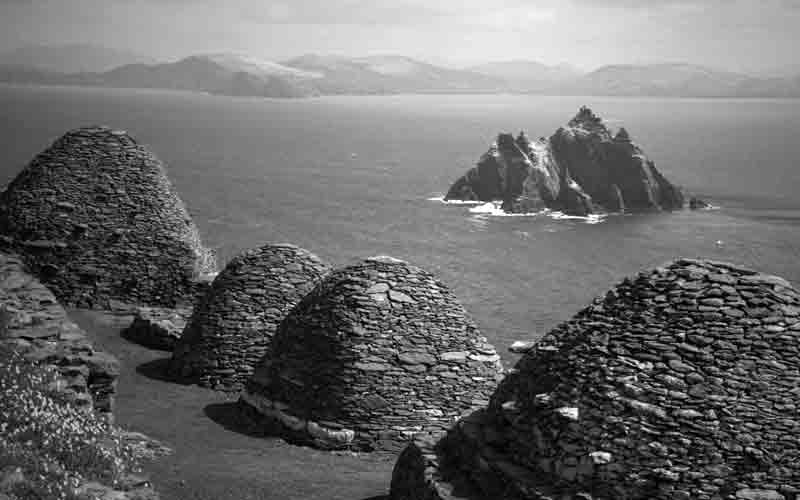
Innisfallen Island, Killarney National Park, County Kerry
Innisfallen Island lies in tranquillity within Lough Leane in Killarney. Dating back to the 7th Century, Innisfallen monastery was constructed under the watchful eye of Saint Finian the Leper, a devout monk.
As well as a place of solitude and reflection, over the following years it became a seat of learning. Legendary Irish hero Brian Boru was educated here. It is most famous for the Annals of Innisfallen. These are records of medieval history written over centuries by the monks of the island. They include a documented account of the arrival of Saint Patrick to Ireland. The Annals are now in Oxford with calls for them to be returned home.
The 12th century monastery and roman style church may be in ruins, but their imposing structure remain very much evident. The evergreen trees and rugged terrain add to the feeling of the weight of spirituality and history in the ground beneath your feet and whispering in the air around you.
Kiltstuitheen, Ghost Island of Liscannor Bay, County Clare
Nestled between the coastal resorts of Lahinch and Spanish Point, the waters of Liscannor Bay have an uneasy current that hints at the enigma laying beneath the surface.
Legend has it that Kiltstuitheen was an opulent settlement. It had gold turreted castles and spires of gold on the churches, an imposing symbol of the wealth of the Chieftain, his clan and other islanders.
When the Chieftain was beaten in battle, a giant tidal wave engulfed the island and everyone perished beneath the waves. A golden key said to open the door to the Chieftain’s kingdom became lost during the battle and is now believed to be buried beneath a monolith on Mount Callan.
When the key is found, it is said Kiltstuitheen will rise up from its watery grave and the Chieftain will return to lead his people. Fishermen have seen glimpses of the gold topped architecture beneath the waves and it is said every seven years enough of the mystical island rises above the ocean to be seen from Lahinch beach. However, be warned – anyone seeing the island from shore is said to be doomed to die before Kiltstuitheen rises again.
Skellig Michael, County Kerry
Famous both on Earth and in a galaxy far, far away, this world heritage site off Ireland’s Ivereagh Peninsula has a history dating back thousands of years, long before Luke Skywalker set foot on the rugged terrain.
The origins of Skelling Michael are cloaked in mystery, although accounts have been documented in ancient texts.
Saint Finnian founded a monastery on Skellig in the sixth century due to its remoteness and isolation from civilization. It was sometime between here and the 11th century that the monastery and Church were dedicated to Saint Michael, giving the large rocky habitat its name.
The waters across to Skellig are treacherous and much of the time there is no access, but once there, you will see the remains of the monastery, St. Michael’s Church, the Monk’s Graveyard and over a hundred crosses dominate the rugged landscape.
Home to ‘The Last Jedi’, Skellig Michael is deep in Irish history, synonymous with the strongest elements of nature and enigmatic wonder.
Inishbofen Island, County Galway
Inishbofen first saw mention in ancient texts with the arrival of Saint Colman in the seventh century. The religious man had been exiled for arguing the date of Easter. The island also known as ‘The Island of the White Cow’ lies off the coast of Connemara and is full of history, mystery and folklore.
The famous Irish pirate queen, Grace O’Malley ruled here along with her Spanish ally Don Bosco and they were said to have stretched chains across the waters to capture and loot ships.
In the seventeenth century, Cromwell’s soldiers built a fort which is now known as Cromwell’s Barracks. This was used to inter the Catholic Clergy performing masses and duties in direct violation of Cromwell’s orders thus committing high treason.
No one can say for sure when the island became a settlement or even what culture and religion the first settlers followed as unusually, there is a shortage of archaeological evidence.
Legend has it that two fishermen landed on Inishbofen after becoming lost in fog. They lit a fire and the flames began to burn off the mist. As their view became less obscured, they saw an old woman driving a white cow along a stretch of beach separating Loch Bo Finne and the ocean. She struck the cow and the fishermen saw that it turned to stone. It is said she and the cow appear every seven years or to warn of impending doom.
Scattery Island, County Clare
Scattery Island lies off the coast of Kilrush and is named after the sea monster who terrorised the islanders. Sometime before the sixth century, dwellers were living in fear of a Peist called the Cathach. Saint Senan was said to have been visited by the Archangel Michael who told him how to banish the wicked abomination.
Senan faced the monster and ordered it in the name of the Holy Trinity to leave and never return. Cathach is said to have been banished to the waters of the Black Lake in County Mayo. Saint Senan founded the monasteries and a Holy Well. To this day a visit to the grave of Saint Senan is said to have healing properties.
At the turn of the nineteenth century, a fisherman sought sanctuary from a tempest and went to pray in the ruins of the church on Scattery Island. As he knelt and closed his eyes he began to hear voices. He was shocked to see monks and priests celebrating mass at the altar, oblivious to his presence.Terrified, the man closed his eyes and prayed that they would leave -when he opened them again they were gone.
Rathlin Island, Antrim Coast
Of natural volcanic origin, Rathlin Island’s close proximity to Scotland has led to it being pivotal in Scottish history. Before that however, Rathlin was listed in the Annals of Ulster as the first location of Viking raids on Ireland and the buildings were plundered and burned.
At the start of the fourteenth century, Robert the Bruce sought refuge in Rathlin Castle. As he lay despairing of his defeat against the English, he watched a spider trying to get from one beam to the next on a single thread. He counted and saw that it failed six times, as had he in battle.
He decided that if the spider succeeded on the seventh attempt he would return to Scotland and take up arms once more.The spider was victorious as was Robert the Bruce at the Battle of Bannockburn some eight years later.
Sadly it was also a place of death and despair. Francis Drake went to Rathlin to confront Scottish refugees and massacred hundreds of men, women and children in the name of the Crown. In the mid seventeenth century, more foot soldiers were sent by the powerful Campbells to destroy the rival MacDonald clan as they were Catholic. Hundreds of clanswomen were thrown from the cliffs and dashed on the rocks below.
Local stories of hauntings are rife. One such tale is that of the fishermen making tea in a cave. A hand came out of the darkness bearing an empty cup. The terrified men didn’t look up as their shaking hands filled the phantom receptacle. Satisfied, the spectral hand pulled back into the inky shadows.
Spike Island, County Cork
Spike Island lies just off of the coast of Cobh is one of Ireland’s most haunted and eerie landmarks, with more than 100 acres and spanning a history going back to the 7th century. Originally a monastic community, it’s location on the edge of Cork Harbour meant it was of strategic significance.
In 1779 Spike Island became a fort for British Forces, with casements built so that guns were facing into the Harbour. As time progressed, the fort became a prison and convict holding site for those unfortunates being shipped out to penal colonies. During the Irish War of Independence IRA prisoners were held until 1921 and it became known as Ireland’s Alcatraz.
The Island was maintained as both a jail and military base until the latter 20th century when it became a Youth Correctional Facility. After a riot that lead to the remaining island civilians, Gardaí and prison officers being virtual prisoners themselves, the facility was wound down.
Spike Island is now a tourist attraction much the same as Alcatraz and is not without its own ghosts. A spectre known as the White Woman haunts the island and the perimeter walls are guarded by a phantom soldier staring through black hollows where his eyes once were. Soldiers on duty have been scared out of their wits by a ghostly officer and the gaol cells have become a hotbed of paranormal activity.


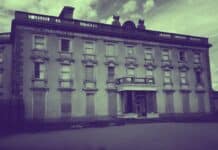
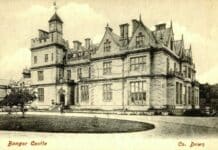
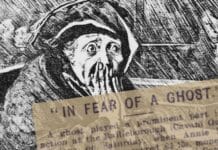
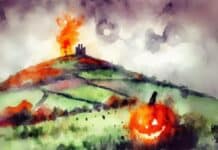




I love hearing stories of haunted Ireland. I’m really looking forward to your book.
REH